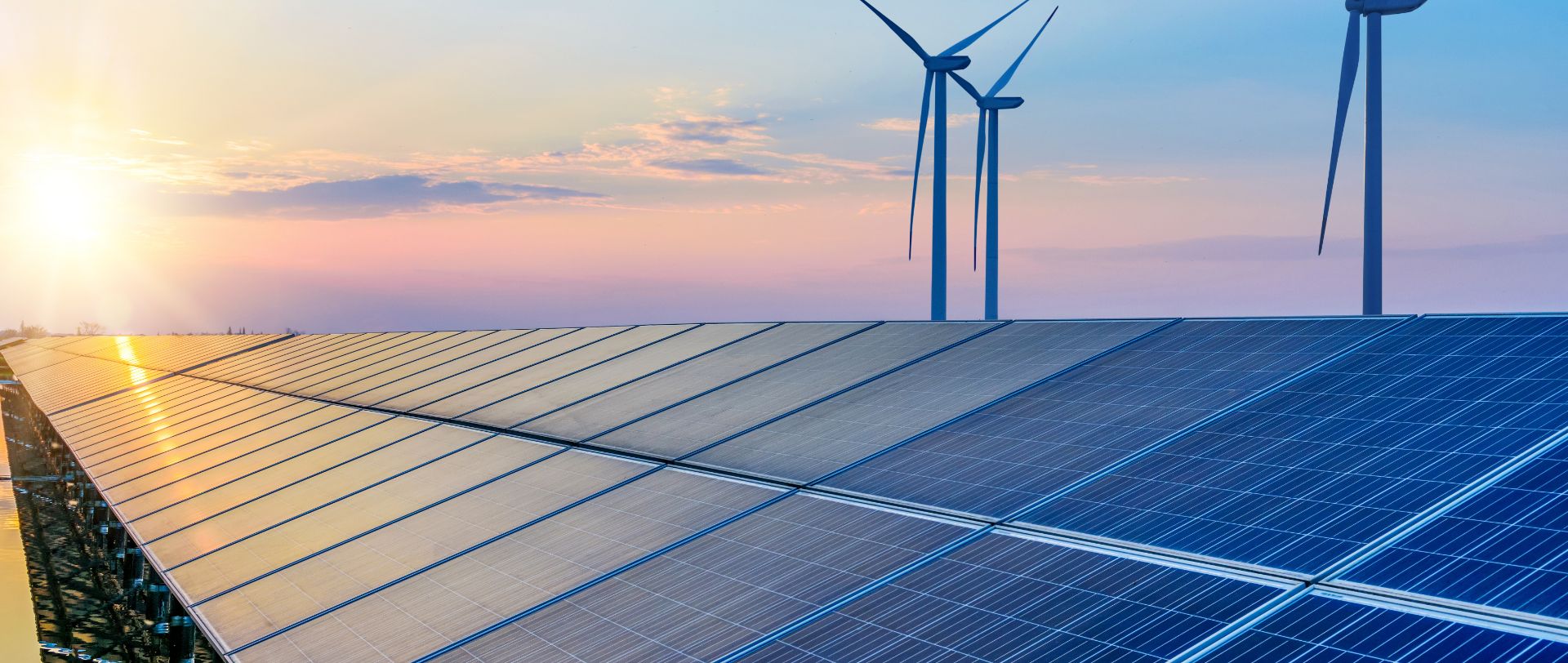Transformation plan (E1‑1)
- ESRS:
-
Transformation plan for climate change mitigation E1-1Transformation plan for climate change mitigation
Material impacts, risks and opportunities in the area of climate change
As a Group, we are committed to making ethical decisions in managing our environmental impact. This is reflected in one of the pillars of our 2024-2026 Strategy – Total Responsibility.
Our strategic environmental goals are:

-
To be a role model in sustainability and transformation.
-
To help clients navigate the green transition and advise them on how to carry it out.
-
To build a business network by identifying trusted partners and assisting them in organising financing.
We intend to achieve our strategic goals through the transformation of the Group and our clients in line with the objectives adopted for the coming years:
How do we achieve our strategic goals?
Transformation of the Group
- We reduce our own emissions, including by increasing energy efficiency. 100% of the electricity purchased directly by the Bank comes
from RES, for the remaining volume of electricity the Bank obtains guarantees of energy origin. - We have initiated energy production from photovoltaics on our own buildings, to be expanded in the coming years. We are also testing
solutions to reduce heat energy consumption in branches. - We integrate environmental risks into our business model.
- We train and support employees in providing green transactions, identifying ESG risks and preventing greenwashing.
- We increase the Green Asset Ratio and diversify the portfolio of green assets and products.
- We analyse „Scope 3” emissions within our portfolio and identify decarbonisation levers.
- We develop transition plans that include adaptation and climate change mitigation goals, aligned with the Santander Group strategy.
- We are preparing preferential offers for employees for ecological purposes.
Transformation of Clients
- We create transformational products and advisory services across all segments.
- We identify and leverage synergies within supply chains.
- We develop a program for the transformation of cities.
- We provide solutions for agribusiness.
- We support the energy transformation of buildings.
To assess the impact of the Group on climate change, we performed a portfolio sensitivity analysis and calculated both our own emissions (applying the GHG Protocol assumptions) and financed portfolio emissions using an internal methodology based on the assumptions of the PCAF (Partnership for Carbon Accounting Financials) methodology. The double materiality assessment identified that key impacts, risks, and opportunities exist in the following
areas:
Climate change mitigation
Key impacts include negative effects on the environment through financing entities not aligned with a low-emission
economy and greenhouse gas emissions from portfolio activities. However, we see opportunities such as the development of green mortgages,
financing the modernisation of buildings, electric vehicles, and charging infrastructure, as well as supporting low-emission technologies in
agriculture and industry. Risks include reputational damage resulting from the failure of the Group or its clients to achieve climate goals.
Energy
Impacts in this area include contributing to environmental protection by increasing the use of renewable energy and supporting lowemission technologies.
Transition plan for climate change mitigation
The Santander Bank Polska Group plans to adopt a transition plan for climate change mitigation. We are currently at the stage of analytical works. This involves assessing current greenhouse gas emissions, analysing climate risks, and reviewing our actions and processes. To talk responsibly and credibly Management Board Report on Santander Bank Polska Group Performance in 2024 (including Report on Santander Bank Polska S.A. Performance) 220 about a transition plan, reliable data on greenhouse gas emissions from our own operations is essential and, above all, greater availability of actual data on the emissions of the investments and customers we finance, and their analysis, combined with an understanding of conditions and regulatory and market trends.
Only when the necessary actual data has been collected and analysed, we will be able to indicate a date for the adoption of a transition plan, however, we assume that this should be no later than with the 2026 reporting.
As part of this statement, for the first time, we have calculated and disclosed the greenhouse gas emissions financed by us, particularly those resulting from the business activities of clients financed through our loan portfolio. These estimates were conducted using the knowledge and methodologies currently available on the market. More information can be found in section E1-6.

The foundation for developing the transition plan for the Group’s loan portfolio lies in the activities we are gradually implementing as part of the global climate agenda of the Banco Santander Group, including the Net Zero efforts. This strategy assumes aligning our portfolio with the goals of the Paris Agreement and the European Union policy, which highlights the significant role of the financial sector in alleviating climate change. We strive to achieve net-zero emissions by 2050, including in the entire value chain of the Group.
Additionally, in our work on the transition plan, we consider international and EU initiatives and guidelines, including:
- UN Sustainable Development Goals,
- EU Taxonomy Regulation,
- Sustainable Finance Disclosure Regulation (SFDR),
- Corporate Sustainability Reporting Directive (CSRD),
- UNEP FI Principles for Responsible Banking,
- Equator Principles,
- Material industry aspects identified by ESG ratings, such as S&P ESG Scores and MSCI ESG,
- EBA/GL/2020/06 Guidelines on loan origination and monitoring,
- Draft guidelines of the European Banking Authority on ESG risk management.
- The climate actions of the Group are based on three pillars – The ambition of the entire Group is striving to achieve net zero emissions by 2050.
- Striving to align our portfolio and own operations with the goals of the Paris Agreement – Adjusting the portfolio to ensure that projected carbon emissions align with the goal of limiting temperature increases to 1.5°C, in line with NZBA and NZAM. Sourcing electricity from renewable sources to reduce our environmental impact.
- Supporting our clients in their green transformation – Helping clients transition to a low-emission economy by providing guidance, advice, as well as investment and business solutions for clients.
- Integrating climate into risk management – Ensuring compliance with regulatory/supervisory expectations and incorporating climate considerations into risk management.
Current goals for reducing the emissions of the loan portfolio:

-
by no later than 2030, we will discontinue financing of energy companies where revenue from coal-based energy production exceeds 10%
-
we support clients in the transition process through comprehensive financing of renewable energy sources and the development of adequate financial products
We support the transformation of the Polish economy towards a low-emission model by providing sustainable financing, particularly in the area of renewable energy sources (RES). We are systematically increasing the share of the RES portfolio among energy sector clients. Additionally, we offer loans linked to sustainability goals (SLL). We support both businesses and individual clients through tailored products aimed at financing solutions that enhance energy efficiency in buildings, electric vehicles, heat pumps, electric vehicle charging stations, and energy storage systems. We continuously analyse market conditions and identify further actions to most effectively support the transition of clients and to limit emissions of our portfolio. More information can be found in E1-3.
In 2024, we developed more detailed metrics related to ESG risks (including in the areas of energy sectors and those sensitive to climate change) and incorporated them into relevant internal reports. These metrics were included in the update of the risk appetite and in the determination of concentration and exposure limits. In the longer term, developments in this area will also include verifying the degree of implementation of decarbonisation levers (primarily the growth of financing for green buildings, RES and electric vehicles).